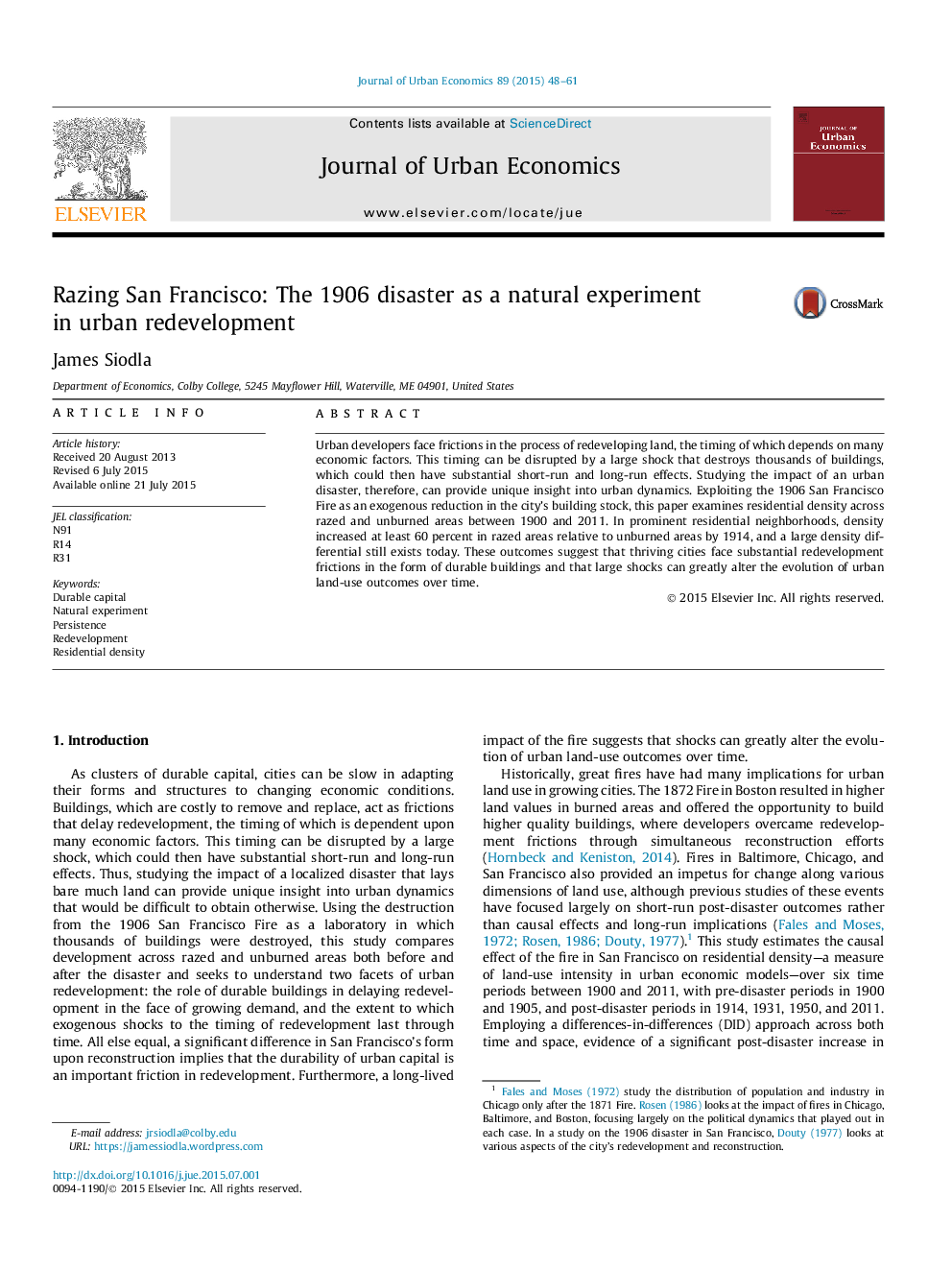| Article ID | Journal | Published Year | Pages | File Type |
|---|---|---|---|---|
| 970735 | Journal of Urban Economics | 2015 | 14 Pages |
Urban developers face frictions in the process of redeveloping land, the timing of which depends on many economic factors. This timing can be disrupted by a large shock that destroys thousands of buildings, which could then have substantial short-run and long-run effects. Studying the impact of an urban disaster, therefore, can provide unique insight into urban dynamics. Exploiting the 1906 San Francisco Fire as an exogenous reduction in the city’s building stock, this paper examines residential density across razed and unburned areas between 1900 and 2011. In prominent residential neighborhoods, density increased at least 60 percent in razed areas relative to unburned areas by 1914, and a large density differential still exists today. These outcomes suggest that thriving cities face substantial redevelopment frictions in the form of durable buildings and that large shocks can greatly alter the evolution of urban land-use outcomes over time.
